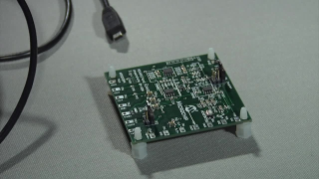Mikrokontroler & Microchip SAM E54 Curiosity Ultra Development Board
Win a Microchip SAM E54 Curiosity Ultra Development Board (DM320210) from Mikrokontroler and if you don’t win, receive 15% off your next purchase plus free shipping.
The SAM E54 Curiosity Ultra Development Board (DM320210) includes an integrated programmer and debugger, so no additional hardware is required to get started. Users can expand functionality through MikroElectronika mikroBUS™ Click™ adapter boards, add Ethernet connectivity with the Microchip PHY Daughter Board, add Wi-Fi™ connectivity capability using the Microchip expansions boards, and add audio input and output capability with Microchip audio daughter boards.
With or without expansion boards, the SAM E54 Curiosity Ultra Development Board provides the freedom to develop for a variety of applications, including Bluetooth Audio, CAN, Graphics User Interface, Internet of Things (IoT), robotics development, and proof-of-concept designs.
The SAM E54 high performance microcontroller series features a 32-bit ARM® Cortex®-M4 processor with Floating Point Unit (FPU), running up to 120 MHz, up to 1 MB Dual Panel Flash with ECC, and up to 256 KB of SRAM with ECC. It also adds a 10/100 Ethernet MAC and 2 CAN-FD ports targeted for industrial automation, automotive applications and general-purpose applications requiring wired connectivity. The SAM E54 microcontroller series offers excellent features with class leading power performance and integrated hardware security.
The development board contains a Microchip Embedded Debugger (EDBG) for on-board debugging. The EDBG is a complex USB device, which is based on the following interfaces:
- Debugger
- Virtual COM Port
- Data Gateway Interface (DGI)











